Tag Archives: blockchain
What is Web3.0? Features, Design, Skills, NFTs
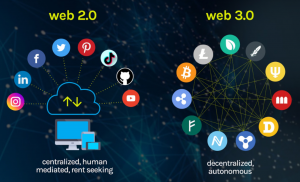
Last updated: 27th Nov, 2023 What is Web3.0? Web3.0 is the next phase of the internet, which focuses on decentralization and security. It includes new technologies like blockchain, which is revolutionizing how we interact with the internet. To be successful in this new era of the Web 3.0 internet, you will need to have a variety of different skills. In this blog post, we will discuss what those skills are and how you can acquire them! What is Web 3.0? Web 1.0 was characterized by its static content delivery, offering a largely read-only experience to users. In contrast, Web 2.0 marked a significant shift towards interactivity, user-generated content, and the …
List of Blockchain Platforms & Examples
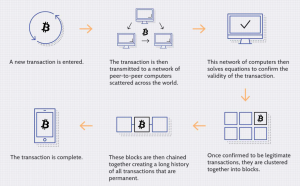
You may have heard of Bitcoin, Ethereum, or even Hyperledger, but what exactly are they? They are all examples of different types of blockchain platforms. In this blog post, we will give a detailed overview of the list of the different types of blockchain platforms and some examples to help you better understand this cutting-edge technology. Bitcoin Blockchain Bitcoin is a digital asset and a payment system invented by Satoshi Nakamoto. Transactions are verified by network nodes through cryptography and recorded in a public dispersed ledger called a blockchain. Bitcoin is unique in that there are a finite number of them: 21 million. Bitcoin blockchains function differently from traditional ledgers. …
NFT Use Cases & Applications Examples
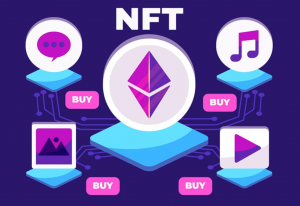
What are NFTs? NFTs (non-fungible tokens) are a relatively new type of cryptocurrency that have a wide range of potential applications. They are different from traditional cryptocurrencies like Bitcoin because each individual NFT is unique and cannot be replaced by another token. This makes them perfect for use in a variety of applications, from digital collectibles to decentralized marketplaces. In this blog post, we will explore some of the most interesting NFT use cases and applications. What are some of the popular use cases for NFTs? The following are some of the most common use cases for NFTs: NFTs can be used to represent ownership of digital assets such as …
Non-fungible tokens (NFTs) & Real-world examples
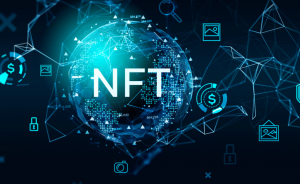
You may have heard the term “non-fungible tokens (NFT)” but what do they mean? Basically, they are a type of cryptocurrency that is unique and not interchangeable. Unlike regular Bitcoin or Ethereum, which can be divided and traded like shares, non-fungible tokens are indivisible and have their own value. This makes them perfect for use in specific applications like digital art or collectibles. Here we’ll discuss what are NFTs and what are some real-world examples of where non-fungible tokens are being used today. What are Non-fungible tokens (NFT) and how do they work? Non-fungible tokens are unique digital assets. The word non-fungible means that each token is not interchangeable with …
What is Blockchain & How does it work?
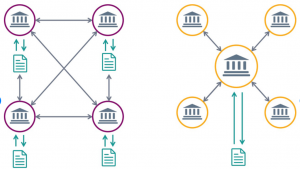
Blockchain is a distributed database that allows for secure, transparent, and tamper-proof transactions. It was first introduced in 2009 as the underlying technology behind Bitcoin. Blockchain has since garnered a great deal of attention due to its potential applications in a variety of industries. In this blog post, we will explore what blockchain is and how it works! What is Blockchain? Blockchain is a distributed database that allows for secure, transparent, and tamper-proof transactions. Blockchain was originally conceived as the underlying technology for the cryptocurrency bitcoin. However, Blockchain has since been found to have many other potential use cases. The key concepts behind Blockchain are decentralization, immutability, and consensus. Blockchain …
Is Blockchain a Database?
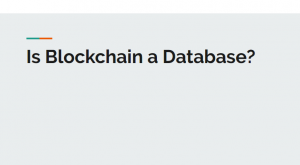
This video represents a comparison/difference between Blockchain and a traditional database form. Some of the following aspects of Blockchain is highlighted in the comparison: Blockchain copy maintained by the different member organizations Decentralized ownership Data immutability Consensus algorithm Transaction anonymity Users anonymity
Blockchain – Opportunities & Risks for Financial Institutions
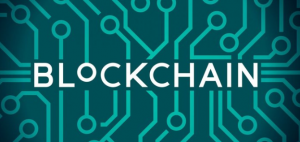
Here is a good white paper/research report published by European Banking Authority (EBA) detailing out the opportunities and risks associated with the adoption of Blockchain in relation to financial institutions. Report on risks and opportunities arising for financial institutions due to FinTech Use cases related to some of the following are described: Usage of distributed ledger technology (DLT) and smart contracts for trade finance Use of DLT to streamline customer due diligence (CDD) processes In this use case, the “digital identity” concept is explored and described.
Blockchain – How to Store Documents or Files
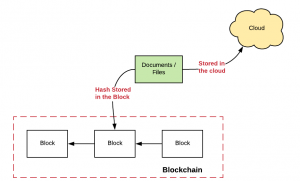
This post represents best practices in relation to storing documents or files in the Blockchain. The need to determine best practices arises from the fact that business between two or more parties ends up exchanging documents consisting of data related to the agreement, business details etc. One often questions whether one store’s document or file in the blockchain or the hash of the document/file in the Blockchain. Store documents in Blockchain – Best Practice/Recommendation As a best practice, it is not recommended to store the document (PDF format or otherwise) or file in the Blockchain. Different blockchain frameworks limit the size of the block which can be added to the blockchain. Although in blockchain network …
Bitcoin Blockchain – What is Proof of Work?
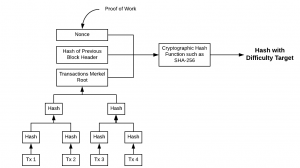
In this post, you will learn about what is proof of work in a Bitcoin Blockchain. Simply speaking, the proof of work in computing is used to validate whether the user has put enough effort (such as computing power) or done some work for solving a mathematical problem of a given complexity, before sending the request. For example, Go to any online SHA 256 calculator tool and try using a random number with the text “Hello World” as shown in the below screenshot. If the difficulty target is set as the hash value starting with one zero, you could see that the random number 10 results in hash value starting with zero. The number 10 …
Is Blockchain a Linked List like Data Structure?
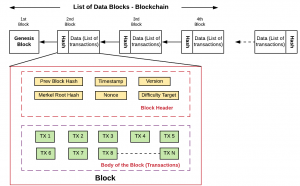
In this post, you will learn about similarity and differences between linked list and Blockchain. The most trivial way to understand What is Blockchain is to visualize Blockchain as a crude form of the Linked List data structure that we read in one of our engineering classes. Simply speaking, a Blockchain can be defined as a linked list of a group of transactions (block) which is connected with each other using hash pointers rather than pointers as in the case of the linked list. The following diagram represents the Linked List data structure: The following diagram represents the Blockchain. Note some of the following characteristics of a block: Each block …
Learning Blockchain – Free Online Courses & Training – 1

This is the first blog representing a series of posts on enabling you to learn Blockchain online. Such posts would also represent some interesting projects for you to learn the different aspects of Blockchain implementation. This post is aimed to represent some links in relation to learning Blockchain concepts vis-a-vis free online courses, training. (Learning) Center for Blockchain Research (CBR) by Stanford: The following are free textbook and Coursera course on Cryptography: Free online Cryptography course on Coursera Free online textbook on applied cryptography (Case Study) Distributed Contracting Blockchain Network by Microsoft & EY: The diagram below demonstrates the following different aspects of blockchain: Permissioned blockchain registering entertainment, gaming industry …
Kerala to lead Blockchain Training in India

Kerala becomes the first Indian state to set up a goal of providing Blockchain training creating to IT community stakeholders (primarily students) and create 25000 Blockchain professionals in 3 years time frame. They have designed a program called ABCD (Accelerated Blockchain Competency Development) Programme which comprise of courses such as following: Foundation training programme aimed to provide training in skills such as HTML, MEAN stack, GoLang etc. This programme comprises of 82 Hrs of classroom training and around 42 Hrs on self-learning activities (total of 124 hrs over a period of 6 months for students, 1 month for graduates and 6 weeks for working professionals). The course fee is Rs. …
Blockchain & Smart Contract for Quick Insurance Payouts?

In this post, you will learn about how Blockchain and Smart Contracts could benefit Insurance Claims Payout processes resulting in faster and smoother payouts. Blockchain is already having a positive impact on insurers and reinsurers by removing frictional costs by reducing the need for manual data inputting and multiple checks and data accounting between parties. Why delay in Insurance Claim Payouts? One of the painful aspects of insurance claims is delayed payouts. There are several reasons including some of the following which results in delayed claim processing and hence, delayed payouts: Type of insurance product/program: Different types of insurances result in the different duration of payouts on an average. Structure of the insurance program Level of cover …
Lessons on Blockchain & Cryptocurrency for MBA Students

Given that both, financial and non-financial businesses are trying to figure out how they could use Blockchain to impact their business in a positive manner, it is becoming imperative for MBA students to learn the basics of Blockchain & related technologies. The following are some of the topics which could be included in the course-curriculum for MBA courses related to Blockchain and cryptocurrency. Blockchain fundamentals Distributed ledger technology (DLT) Types of Blockchains (public, private/permissioned) Terminologies such as a unit of value, transaction, a block of transaction Consensus algorithms Authentication mechanisms for permissioned blockchain Blockchain platforms such as Ethereum, Hyperledger, Corda, EOS, Multichain etc. Smart Contracts Cryptocurrency – Bitcoin, Ether & Others Hard forks such as Bitcoin Cash Cryptocurrency exchanges Initial …
Why create Performance Appraisal System on Blockchain?
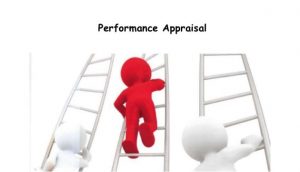
In this post, I would discuss the need for creating a performance appraisal system by making use of Blockchain, Smart Contracts, and Cryptocurrency such as PATB (PAT on the Back) Coin. This article is in continuation to the article I posted on LinkedIn with the title as A Decentralized Performance Appraisal System using Blockchain & Smart Contracts? Performance Appraisal – Need for Greater Trust, Transparency, and Rewarding Experience In age-old performance appraisal review system, the performance review is done by a couple of guys including the immediate manager/team leads and the reviewer. While some managers (and/or team leads) maintain the record of the all-round contribution of the employee throughout the year, most of …
InsurWave Blockchain Platform – Technology & Other Details

Insurwave is claimed to be world’s first marine insurance blockchain platform launched as a result of a joint venture by Ernst & Young (EY), GuardTime and insurance industry participants. This looks to be a permissioned blockchain platform requiring the member organizations (maritime companies, brokers, insurers, and reinsurers) to be authorized prior to becoming part of the Blockchain consortium. InsurWave Blockchain Platform is used to? The blockchain platform is used to achieve some of the following objectives: Store data related to assets Store data about identities, risk, and exposures Associate date to smart contracts Connects assets, transactions, and payments Integrate this information with insurance contracts. What’s the technology behind InsurWave? The following are some of the key aspects of the technology used …
I found it very helpful. However the differences are not too understandable for me